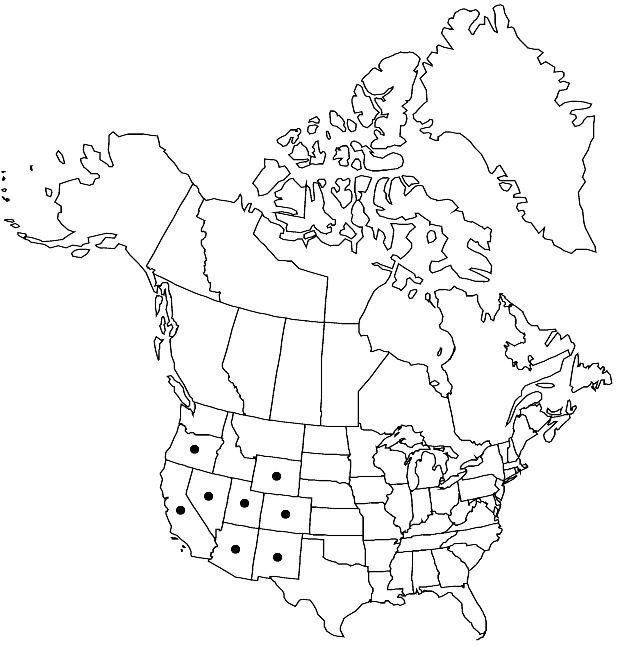Descurainia californica
in H. G. A. Engler, Pflanzenr. 86[IV,105]: 330. 1924.
Annuals or biennials; eglandular; usually pubescent, trichomes dendritic, sometimes glabrous distally. Stems erect, unbranched basally, branched distally, (1.3–) 2–10.5 (–13.5) dm. Basal leaves: petiole 0.4–4.2 cm; blade pinnate, oblanceolate to obovate in outline, 1.5–6 cm, lateral lobes [2–4 (or 5) pairs], lanceolate, (5–22 × 1–5 mm), margins usually entire or crenate to incised, rarely lobed. Cauline leaves sessile or shortly petiolate; blade smaller distally, distal lobes often narrower, surfaces sparsely pubescent. Racemes considerably elongated in fruit. Fruiting pedicels divaricate to ascending or suberect, often straight, 3–9 (–11) mm. Flowers: sepals spreading, yellowish, oblong, 0.9–1.5 mm, glabrous; petals oblanceolate, 1.1–1.8 × 0.4–0.6 mm; median filaments 0.8–1.4 mm; anthers 0.3–0.4 mm. Fruits divaricate to erect, fusiform, not torulose, (2–) 3–5 (–6) × (0.8–) 1–1.3 mm, (long-acute at both ends); valves each with obscure midvein; septum not veined; ovules 4–12 per ovary; style (0.2–) 0.3–0.6 (–0.8) mm, glabrous. Seeds uniseriate, light-brown, ellipsoid, 1–1.4 × 0.6–0.8 mm. 2n = 14.
Phenology: Flowering Jun–Aug.
Habitat: Disturbed areas in pinyon-juniper, dry hillsides, decomposed granite slopes, sagebrush, moist roadsides, open woods, fir-spruce or aspen communities, gravel and talus slopes
Elevation: 1700-3400 m
Distribution

Ariz., Calif., Colo., Nev., N.Mex., Oreg., Utah, Wyo.
Discussion
Selected References
None.
Lower Taxa
"elongated" is not a number."thick" is not a number."dm" is not declared as a valid unit of measurement for this property."dm" is not declared as a valid unit of measurement for this property.
